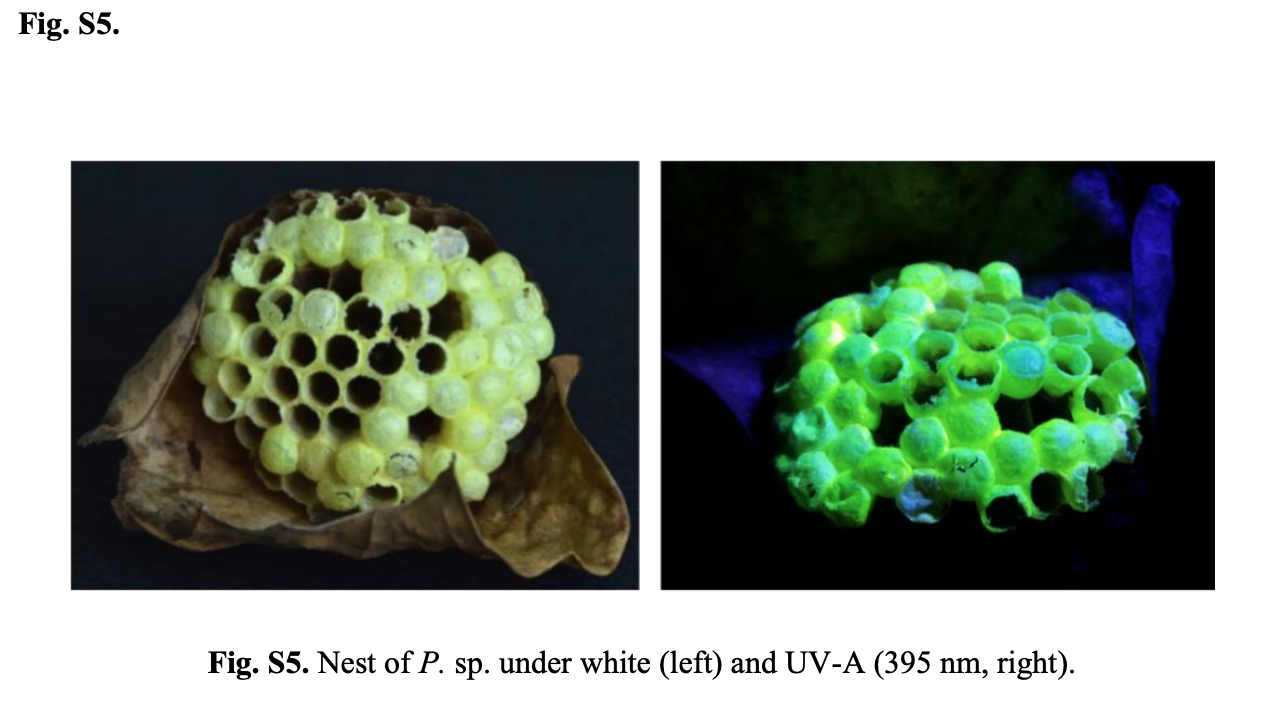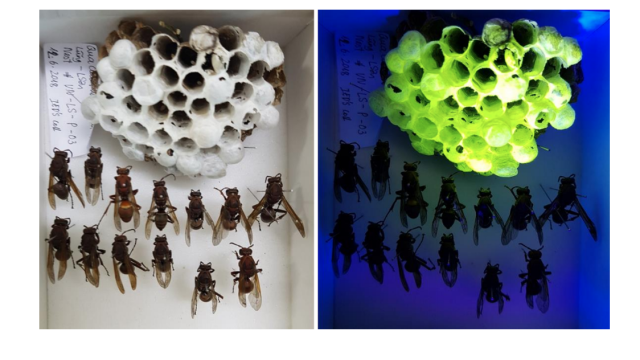A team of scientists say they’ve come across the first known instance of animals building fluorescent homes. In a new paper, they detail finding nests built by certain wasp species that glow green under exposure to ultraviolet light. What’s more, related wasps in other parts of the world also seem capable of creating similarly eerie structures.
The discovery happened during an expedition to Northern Vietnam, but not intentionally, according to the scientists. Study author Bernd Schöllhorn, a professor of chemistry at the University of Paris, told Live Science that they travelled out with UV lights hoping to stumble into any fluorescent bugs when it turned dark. Instead, they found wasp nests with cocoon caps (structures woven out of silk that plug up the nest and keep larva safe) that gave off a bright, booger-coloured glow when exposed to UV light between 360 and 400 nanometres in wavelength at night. Like any good researchers, they took some samples back to the lab to study further.
“We were very surprised to find such strongly fluorescent biomatter,” Schöllhorn told Live Science. “To our knowledge, this phenomenon has not been observed in the past, neither by scientific researchers nor by any photographers.”
All of the glowing nests they found belonged to species of the wasp genus Polistes, also commonly known as paper wasps. When they procured nests from two other Polistes species living in the Amazon rainforest and France and put them under a UV light, they found that these nests glowed as well, though all the nests had slightly different intensity and colour from one another. The team’s findings were published this week in the Journal of the Royal Society Interface, and images of the various glowing nests can be seen here in their supplemental material.

Though glowing under a blacklight might be seen as an exotic trait, scientists have discovered a growing list of creatures from different branches of life that have this unexpected ability — including mammals. But they’re still trying to figure out the reasons why fluorescence would be worth evolving in the first place. The fluorescent nest might aid wasps in navigating back home, for instance, or allow them to tell apart one nest from another. It may also help the development of larvae, since the glow could act as a surrogate light source during the rainy season. It could even be an incidental or vestigial trait that never had any purpose, or has since lost its purpose but remains present because it doesn’t disadvantage the wasps.
The researchers plan to keep studying these wasps and their glowing homes, in order to unearth the chemicals that turn them fluorescent. From there, they hope to find out whether these ingredients could have any application for human use, such as a new fluorescent marker for research or medical imaging.
